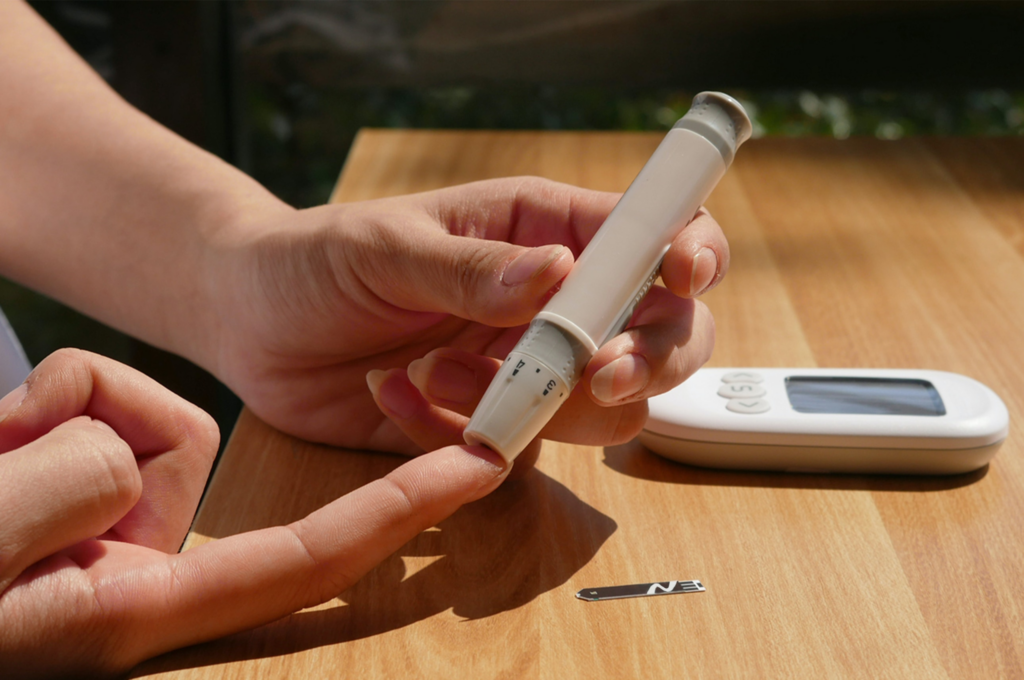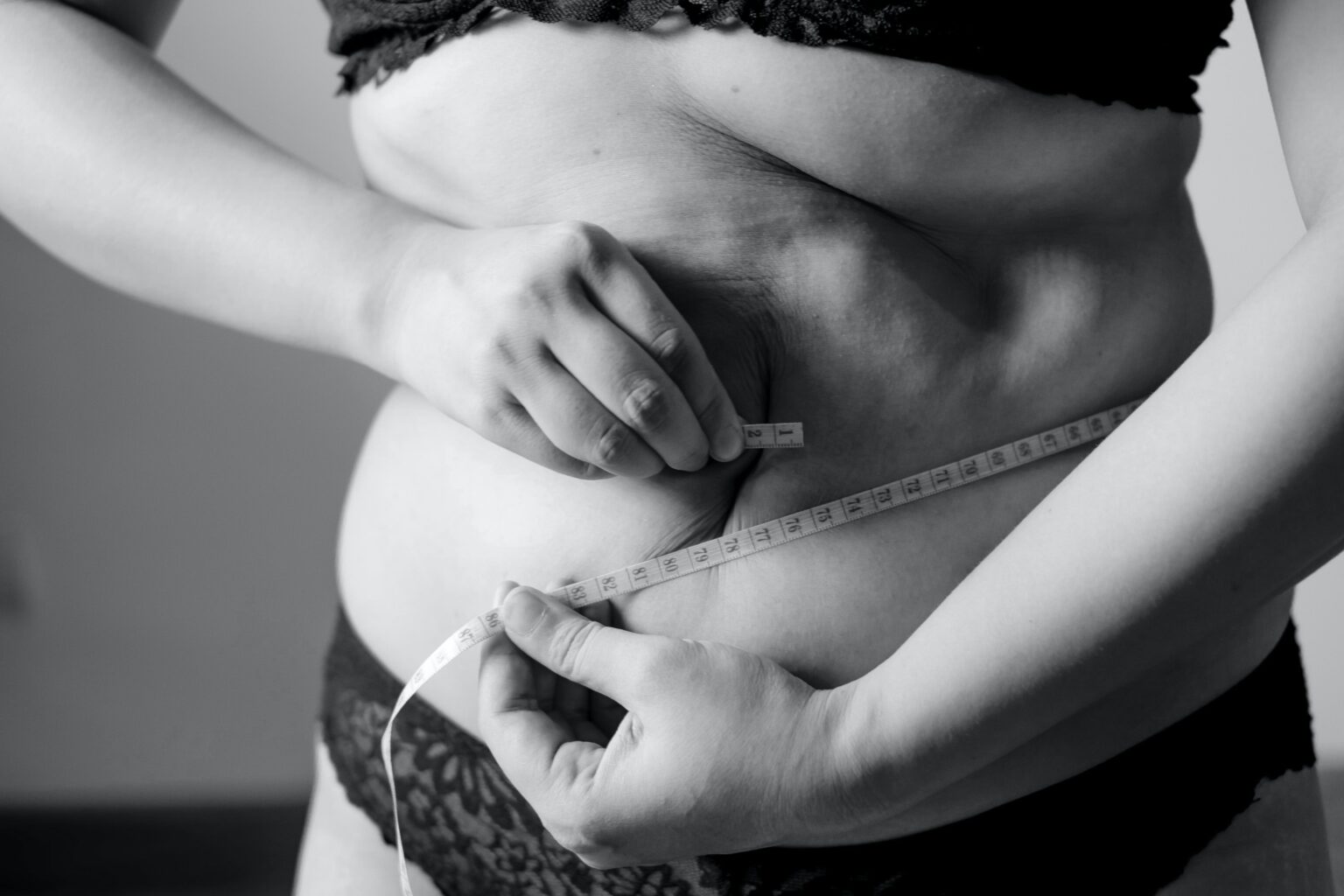Fitness After 40
- August 18, 2023
- No Responses

Fitness After 40
Women’s bodies are a marvel – evolving and adapting across various life stages to meet the unique challenges each phase presents. This transformative journey from our 20s to our wiser years is marked by significant hormonal and metabolic shifts that significantly impact how we function, feel, and even how we should approach our health and wellness routines.
Think back to the energy and resilience of your 20s. During that decade, certain dietary choices and exercise routines might have seamlessly aligned with your body’s demands, fostering optimal health, body mass, muscle mass, and strength. During this time, we have an easier time maintaining hormonal balance, metabolic rate, and cellular regeneration. Yet, as time moves forward, we often find that the same habits which once guaranteed wellness in our younger years no longer yield the same results as we age.
During perimenopause and menopause, our ovaries begin to decrease in efficiency, estrogen metabolism and progesterone circulation wanes, and optimal physical wellness begins to decline with the new and unpredictable hormonal imbalances. This decline impacts various other physiological functions from how fat is stored and distributed in the body to the health of our bones and muscle mass.
As we dive into this exploration, it’s essential to approach it with an open mind, understanding that knowledge is power. By comprehending the nuances of our evolving bodies, we empower ourselves to make informed decisions, ensuring that our next phases in life are marked by vitality and grace.
Here’s what we’re covering below:
- Hormonal shifts beyond just declining estrogen: A view of the symphony of hormones and their impact on the body.
- Metabolic rate declines: A look at how muscle mass and hormone imbalances influence metabolism.
- Adjusting to nutritional needs through supplementation: The benefits of adding creatine for women or supplementing with inositol.
- Identifying a new fitness regime: Prioritizing quality over quantity and understanding the changing demands.
By the end of this guide, you’ll be armed with tools and knowledge to properly fuel and exercise your body for perimenopause, menopause, and beyond.
First, let’s visit what hormonal shifts are happening as we age that are affecting muscle mass, strength, and weight gain.
Hormonal Shifts as We Age: More Than Just Declining Estrogen
Estrogen is the hormone most often associated with menopause. While estrogen’s decline during menopause is significant, it’s only a piece of a complex hormonal puzzle. In conjunction with estrogen, progesterone is also declining during this time. Other hormones that can be affected by declining estrogen include testosterone (very important in muscle building), insulin (important for blood sugar balance i.e. hormonal weight gain), and cortisol (the stress hormone, helps our body stay even-keeled).
These shifts in hormonal balance play a pivotal role in the various physical changes women experience during perimenopause and menopause. Let’s take a closer look at the importance and interplay of estrogen, progesterone, testosterone, and a few other important hormones in the mix and how their change in perimenopause and menopause creates a chain reaction that leads to unwanted physical changes.
Estrogen’s Role
Estrogen plays a vital role in a woman’s overall wellness so it stands to reason that when it begins to decline it has a laundry list of consequences on our physical health.
Weight management: Estrogen influences the distribution of fat in the body. With its decrease, we notice an increase in abdominal fat. It also plays a part in regulating metabolism and hunger pangs.
Bone density: Estrogen is vital for bone health. A decline in this hormone can accelerate bone density loss, increasing the risk for osteoporosis and fractures.
Muscle mass: With a decline in estrogen, some might notice muscle weakness or a decrease in muscle tone. Lower estrogen also contributes to inflammation and oxidative stress and may impact muscle protein synthesis.
Progesterone Decline
Progesterone is another hormone that sees a decline during perimenopause and later menopause, and its reduction comes with its own set of implications on body composition and overall wellness.
Impact on sleep and mood: A drop in progesterone can cause sleep disturbances. Many women report difficulty falling asleep or staying asleep. With sleep disruptions, comes blood sugar swings and insulin resistance, leading to more unfavorable weight gain.
Weight implications: Reduced progesterone, combined with other hormonal changes, can lead to weight gain, emphasizing the need for revised dietary and exercise strategies.
Bone density loss: A decline in progesterone can increase the risk of osteoporosis and bone fractures.
Shifts in mood: Depression, anxiety, and sudden changes in mood can be exacerbated by the decrease in progesterone circulation.

Testosterone and Other Hormones
Declining estrogen and progesterone creates an imbalance with other hormones such testosterone, cortisol, and insulin (more on that one specifically below). These imbalances are where we find the symptoms that alter our physical wellness.
Muscle mass: Testosterone plays a role in building and maintaining muscle mass. A decrease can lead to a reduction in muscle strength and tone, as well as a decline in the effectiveness of muscle repair following intense exercise.
Bone density: Just like estrogen, testosterone is vital for maintaining bone density. A decrease in testosterone levels can increase the risk of osteoporosis and fractures.
Body fat distribution: Reduced testosterone can lead to an increased accumulation of body fat, especially around the abdominal area.
Mood regulation: Testosterone is vital for motivation and intrinsic drive.

Insulin Changes
Insulin, known for its role in regulating blood sugar, undergoes changes during menopause that can inadvertently contribute to stubborn weight gain and declining body composition.
Insulin resistance: Insulin is crucial in regulating blood sugar levels. Reduced sensitivity to insulin, commonly seen during menopause, can lead to unfavorable, stubborn weight gain.
Body composition: Increased visceral fat (fat surrounding internal organs) is strongly linked to insulin resistance.
Increased hunger: Insulin plays a role in regulating hunger. Resistance can lead to increased hunger and calorie intake contributing to weight gain.
The delicate balance between estrogen, progesterone, testosterone, and other hormones makes it clear as to why declining levels in even just one hormone can cause imbalances that wreak havoc on our bodies. Keeping these hormones in mind, let’s explore what happens to our metabolic rates as we age.
The Crossroads Between Declining Hormones and Declining Metabolic Rates

As we transition through the stages of menopause, we often find ourselves more and more frustrated in the gym. These exercise routines that once worked for us in our 20s just are not cutting it. The extra five pounds we find (seemingly out of the blue) is more stubborn than most fat and no matter how hard we work it can seem to even grow instead of shrink. It can be maddening.
Our metabolic rate, which indicates the calories our body expends at rest, naturally decreases as we age. This decline has profound implications for weight management and our overall energy levels.
At a cellular level, the efficiency of various metabolic processes can decrease, leading to a reduced energy output. Additionally, as we age, our organ systems, like the heart, liver, and kidneys, begin to slow and the necessary filtration they provide can eventually become inefficient. An ineffective liver, for example, can’t properly metabolize estrogen and other hormones in our body further contributing to hormonal imbalances.
A major player in metabolic decline is the decrease in muscle mass. Muscle tissue is metabolically active, meaning it burns calories even when we’re not exercising. With the onset of perimenopause and menopause, there’s the natural decline in hormones, which play crucial roles in maintaining muscle mass. As these hormone levels drop, there’s potential for muscle mass to decrease, thereby reducing the metabolic rate.
Hormonal changes during menopause (as discussed above) further compound the metabolic slowdown. For instance, the lower levels of estrogen influencing where the body stores fat, leads to an increase in visceral fat. This shift in fat storage can further lower the metabolic rate since fat cells aren’t as metabolically active as muscle cells.
While this information might sound disheartening, it’s essential to view it as a call to adapt and evolve. Recognizing that the body’s needs change during perimenopause and menopause can empower you to make informed choices about your health. This includes embracing strength training to preserve muscle mass, choosing balanced nutrition and supplementation as necessary (more on that below), and finding a routine in physical activities that support the body’s changing needs. Maintaining our ideal figure and wellness goals is achievable in perimenopause and menopause.
As we continue our exploration of fitness and nutrition after 40, we now look to how we can adjust our nutritional needs through diet and supplementation for optimum physical wellness.
Adjust Your Nutritional Needs After 40 with Supplementation
So by now it’s easy to identify the influence of hormonal shifts during perimenopause and menopause on weight gain as well as the decline of muscle, bone density, and overall strength. Furthermore, these very imbalances often render traditional weight-loss, muscle building, and strength training methods less effective, necessitating a deeper understanding and a tailored approach to address the unique challenges posed by this transitionary period. It’s important to remember that diet is a crucial part of overall wellness and a diet tailored to your changing hormonal needs can also contribute to maintaining muscle mass and losing hormonal weight gain, however that’s a different (extensive) discussion that we will discuss later.
For now, let’s explore what kind of supplementation can be beneficial for muscle mass and weight management. We’ll look at creatine for women and inositol for women.

The Role of Creatine for Women
Creatine holds tremendous potential for women over 40. It’s a compound that is naturally present in our muscles. As women, we naturally have 70-80% less creatine in our bodies than men and much like many other naturally occurring substances in our body, the production of lessens as we age. Less naturally occurring creatine means a decline in muscle health.
A decrease in muscle strength and mass can lead to fatigue and a decline in metabolic rate. By augmenting lean body mass and bone composition, supplementing with creatine counters these effects, especially when combined with resistance training. Creatine helps in increasing strength, power, and athletic performance, all without significant changes in body weight.
Let’s take a closer look at creatine.
Think of creatine as a vital helper for our muscles (and brain). The naturally occurring amino acid helps create ATP (adenosine tri-phosphate – an energy source for our bodies) and positively impacts lean muscle strength. Creatine helps us build and maintain muscle as well as sustain energy for better physical performance.
Who needs creatine?
The answer is straightforward: everyone, but particularly menstruating women and those navigating perimenopause and menopause. Those who are vegan or vegetarian increasingly need creatine as well. Research indicates that creatine supplementation, especially combined with resistance training, can combat the muscle, bone, and strength reductions that often accompany middle age.
If you’re looking for a reliable creatine supplement, try Creatine by Cynthia Thurlow.
It’s worth noting that while creatine is naturally found in animal products, cooking can impair its potency. Therefore, opting for a creatine can be beneficial. Creatine by Cynthia Thurlow is monohydrate – a pure, unadulterated form that our body can seamlessly utilize.
- Easy to absorb and highly effective.
- Supports lean muscle mass and strength.
- Improves bone strength and density.
- Supports memory and cognitive function.
- Provides sustained energy and increased athletic performance.
Another way women can support their bodies through the physical changes of aging through supplementation is by adding inositol.
Another way women can support their bodies through the physical changes of aging through supplementation is by adding inositol.

If you’re looking for a reliable creatine supplement, try Creatine by Cynthia Thurlow.
It’s worth noting that while creatine is naturally found in animal products, cooking can impair its potency. Therefore, opting for a creatine can be beneficial. Creatine by Cynthia Thurlow is monohydrate – a pure, unadulterated form that our body can seamlessly utilize.
- Easy to absorb and highly effective.
- Supports lean muscle mass and strength.
- Improves bone strength and density.
- Supports memory and cognitive function.
- Provides sustained energy and increased athletic performance.
Another way women can support their bodies through the physical changes of aging through supplementation is by adding inositol.
Another way women can support their bodies through the physical changes of aging through supplementation is by adding inositol.
Inositol for Women
Another valuable compound for women over 40 is inositol, a type of sugar with a profound influence on the body’s insulin response and several mood and cognition-related hormones.
What is Inositol?
Myo-Inositol, or Vitamin B8, is present within our cell membranes and is critical for many cellular processes. Our kidneys, liver, and brain can produce it, and it’s found in everyday foods like grains, beans, nuts, and fruits. It’s beyond just a vitamin. Its core function revolves around balancing neurotransmitters, and it also offers antioxidant properties protecting cells from weakening like muscle cells.
- Increase metabolic sensitivity
- Stabilize blood sugar swings
- Promote weight reduction
- Improve cognitive function and sleep health
Exercise Evolution: Quality Over Quantity

It’s a common misconception that the more exercise we do, the better. However, as our bodies undergo significant hormonal and metabolic changes, it’s essential to focus on the quality of exercise rather than the sheer quantity.
The Importance of Weight-Bearing and Resistance Exercises for Bone and Muscle Health
Our bone density and muscle mass naturally decrease with age, especially during the menopausal years. Weight-bearing exercises, such as walking, running, or dancing, help to maintain and even improve bone density. Resistance training, on the other hand, which includes weight lifting and resistance band workouts, are crucial for preserving muscle mass. The effects can be compounded when adding a quality creatine for women supplement to your regime. Maintaining muscle is not just about aesthetics; it’s also about metabolism. Muscle tissue burns more calories at rest compared to fat tissue, so by preserving and building muscle, we can also counteract some of the metabolic slowdown that comes with age.
Adapting Cardio: From High-Intensity Workouts to More Moderate, Sustained Activities
In our 20s, high-intensity interval training (HIIT) might have been the go-to choice for cardio, promising fast results in a short time. While HIIT can still be effective for some in their 40s and 50s, it’s essential to adapt one’s cardio routine to be more gentle on the joints and sustainable in the long term. Activities like brisk walking, cycling, and swimming offer cardiovascular benefits without the wear and tear on our joints. They also promote endurance and stamina, which can decline with age.
But it can’t be as simple as just taking a walk right? Research shows a daily walk in conjunction with other resistance exercises can help bone density and health.
Flexibility and Balance Training to Reduce Injury Risk and Promote Joint Health
With age, our joints might become stiffer, and our balance might not be what it once was. Incorporating flexibility and balance exercises into our routine can help counteract these changes. Activities like stretching, pilates, and balance-focused exercises can enhance joint mobility, decrease the risk of falls, and improve overall body awareness.
The Significance of Stress-Reducing Exercises like Yoga and Tai Chi
During perimenopause and menopause, many women report feeling increased levels of stress or anxiety. The swings in cortisol (our stress hormone), you guessed it, affects the delicate balance of the other hormones and can lead to unwanted weight gain. While several factors contribute to this, finding ways to manage and reduce stress becomes paramount. Yoga and tai chi are excellent physical activities that promote balance training, stress reduction, and overall well-being. They focus on the connection between mind, body, and spirit, offering a serene environment to reduce stress, increase flexibility, and improve mental clarity.
To avoid feeling that frustration at the gym and the endless exercise routines, create a clear focused plan and combine quality resistance training, cardio, and balanced training to support lean muscle and reduced body fat. Adopting a balanced approach to exercise that prioritizes quality over quantity can lead to improved physical and mental well-being during this transformative stage of life.
Conclusion: Challenges of maintaining old routines
The journey of life is filled with numerous changes, and as we age, so too does our body, undergoing shifts and evolutions that affect our health and well-being. As we transition from our 20s to the transformative periods of the perimenopause and menopause years, many often find themselves questioning why the routines that once worked wonders now seem ineffective, or even detrimental.
Exercise routines should adapt with the changing needs of our bodies as we age. Those high-intensity workouts that once felt invigorating in our 20s might now leave us feeling drained or even lead to injuries in our 40s, 50sl, and beyond. The risk lies not just in physical injury but also in the potential discouragement that can arise when our bodies don’t respond as they used to. It’s vital to recognize that evolving our exercise regimen doesn’t mean we’re conceding to age, but rather, we’re optimizing for our current state of health.
Amid these challenges lies an opportunity for self-awareness and growth. Listening to our bodies becomes paramount during these feels. If something feels off or doesn’t yield the desired results, it’s a signal that change is necessary. And while change can be daunting, it’s also a testament to our body’s incredible adaptability and resilience. Embracing change allows us to appreciate our bodies for what they are now, not just for what they once were.
In this new phase, challenge yourself. Re-evaluate the habits, routines, and beliefs that you’ve clung to over the years. Are they still serving you? If not, it’s time to adapt, adjust, and embrace a new path that aligns with your current needs and goals. Remember, your well-being and health deserve nothing but the best. Celebrate your journey, prioritize your health, and step confidently into the next chapter of your life.
This blog shares the views and opinions of Cynthia Thurlow. It should not be used as a substitute for professional medical advice nor intended to diagnose, treat, or prevent any medical condition or disease. Please consult your healthcare practitioner concerning any medical problem or concern, diet changes, and adding or discontinuing a medication or supplement.



